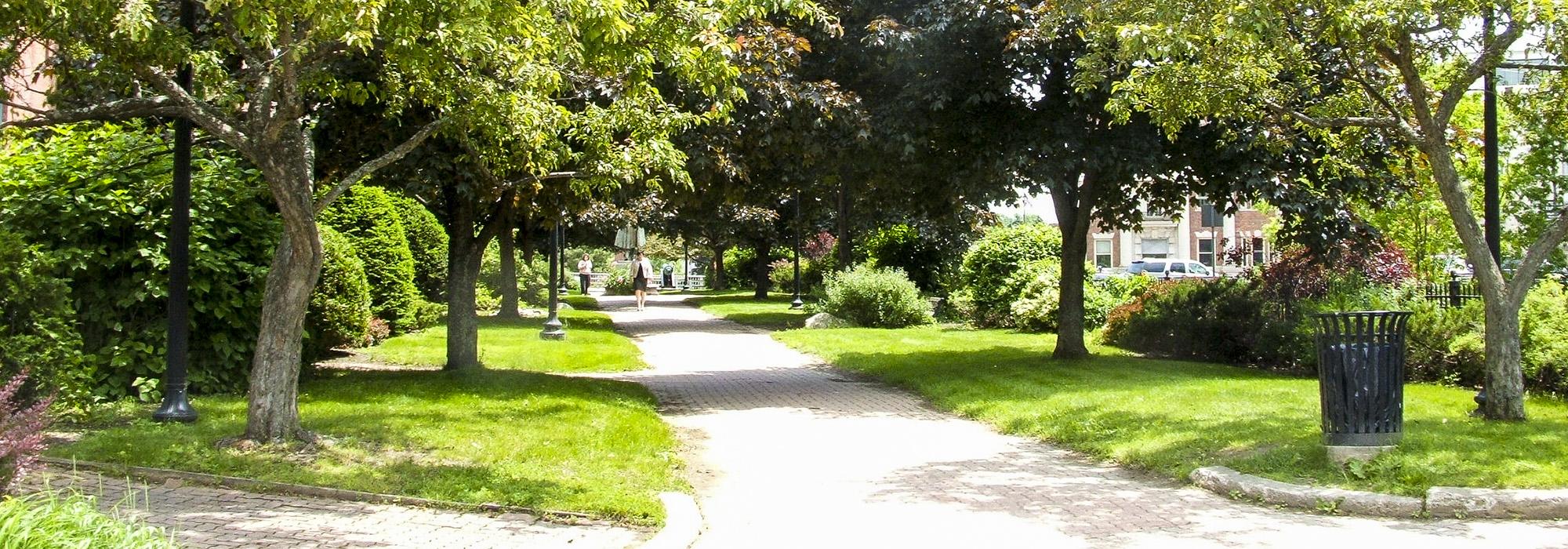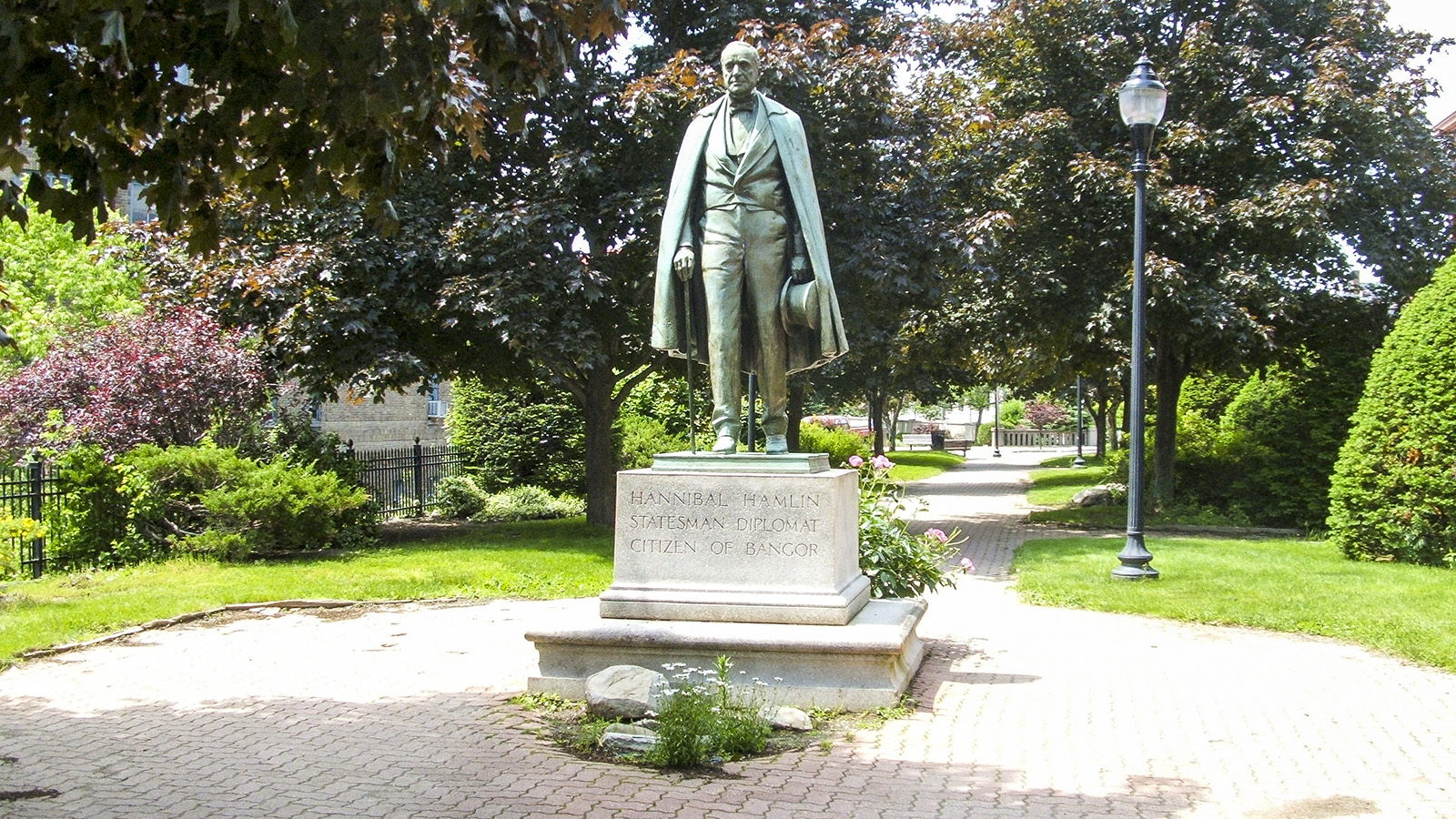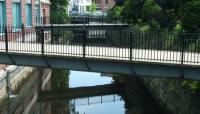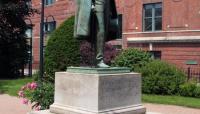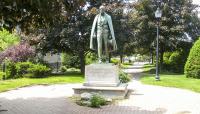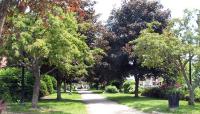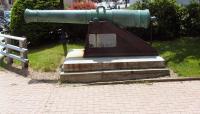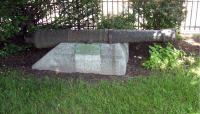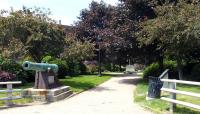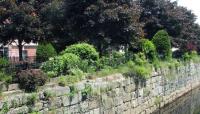Landscape Information
Since the 1850s Bangor’s Custom House/Post Office and Norumbega Hall (market house) occupied man-made islands in Kenduskeag Stream. Bangor’s Great Fire of 1911 consumed both buildings in its 55-acre swath. Landscape architect Warren Manning created a downtown redevelopment master plan and proposed converting the vacant sites into a firebreak and park. Although labeled singularly as Norumbega Mall, the sites were developed at different times and named separately as Kenduskeag Parkway and Norumbega Parkway. Both are linear parks only 60 feet wide; Kenduskeag is 400 feet long and Norumbega is 220. Both were built on foundations of stacked granite and poured concrete walls, with Kenduskeag Stream flowing through canals on each side.
Kenduskeag Parkway’s 1912 design featured an open lawn dotted with shrubs (but few trees), stairs to the sidewalk below, ornamental lampposts, iron fencing, and a central path widened to surround Charles Tefft’s statue of Hannibal Hamlin, dedicated in 1927. (Maine native Tefft was one of the country’s leading sculptors in the early 1900s.) Also present was a cannon salvaged from a sunken Revolutionary War ship in 1876, and another salvaged in 1898 from a Spanish American War ship. Pedestrian bridges connected the park to the adjacent brick commercial building built after the fire.
The park was remodeled in the 1980s with a handicapped-accessible concrete walk, narrowed pedestrian street crossing between the parks, and new shade trees, which contrast with its previously open atmosphere. Otherwise the park retains its historic context among post-1911 brick buildings, its distinct granite and concrete canal walls, pedestrian bridges, path layout, and sculpture. It lies within Bangor’s Great Fire of 1911 Historic District, added to the National Register of Historic Places in 1984.



